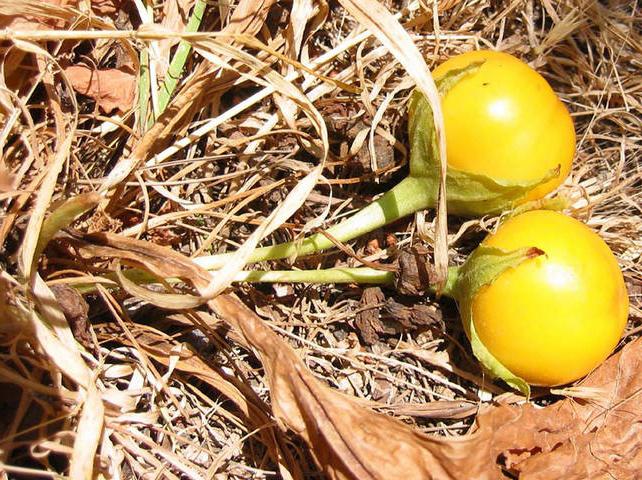In modern taxonomy, the Solanaceae family unites approximately 2,700 species of spine-leaved plants belonging to the dicotyledon class. The family includes valuable food, medicinal and decorative solanaceous plants. Most species of this family grow in the temperate, tropical and subtropical zones - mostly in South and Central America, as well as in Eurasia. Some species belonging to the nightshade family have found application in medical practice, however, medicinal nightshade plants such as mandrake and belladonna are used with great care.
Mandrake officinalis
All species of mandrake are among the rare, hard-to-find plants. Mandrake officinalis grows in southern Europe (Calabria, Sicily). Since ancient times, the root of this plant, resembling a human figure, has been credited with the ability to heal all parts of the body. The round fruit of solanaceous plants was also endowed with miraculous properties. In ancient Egypt and Rome, mandrake apples were used as a means of enhancing sex drive.

Since time immemorial, mandrake preparations have been used as drugs that have anesthetic, sedative and hypnotic effects. Modern studies of the active substances of mandrake have revealed the presence of tropane alkaloids in the plant roots, which have a depressing effect on the nervous system, including some higher vegetative centers. Preparations based on the root of the plant are used to relieve muscle, neuralgic and joint pain, as well as pain and cramping in case of gastrointestinal disorders. Alcohol root tincture is included in the composition of drugs against vitiligo and other skin diseases, and in some cases it is recommended to take it as a sleeping pill. Medicinal
plants in the nightshade
family should be taken with great care, as they can have severe side effects, and even lead to death. Independent use of mandrake can lead to irreversible consequences - loss of memory, impaired brain function.
Belladonna (belladonna)

Solanaceous plants sometimes have absolutely amazing names. Despite the fact that the species name belladonna from the genus belladonna is translated from Italian as “beautiful woman”, the plant is often called a sleepy fool, mad berries and mad cherries. In the Middle Ages, this plant was used as a source of poison. They made an ointment from belladonna, which they rubbed into the body of women recognized as witches. The ointment acted as a “lie detector”: under the influence of toxic substances, the unfortunate victims under torture admitted everything that the inquisitors needed. A dangerous medicinal plant is not used in modern folk medicine, however, the pharmacological properties of belladonna, which coincide with the properties of the alkaloids of the atropine group, are used in medical practice. Belladonna extract is included in the composition of drugs that are used to treat bronchial asthma, gastritis and other diseases. Using a preparation based on an extract of this plant, the state of the fundus vessels is studied . Belladonna, like other dangerous solanaceous plants, doctors forbid to use for self-treatment.